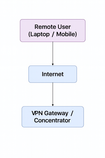Understanding Spanning Tree Protocol (STP): A Complete Guide
- The Itvue Team
- Aug 15
- 2 min read
Author Ermias Teffera
This week, I spent time reading and researching Spanning Tree Protocol (STP) in depth, and I wanted to share a complete breakdown for anyone who’s interested in understanding how it works and why it’s critical for network stability.
Introduction
Spanning Tree Protocol (STP) is a Layer 2 network protocol that prevents loops in Ethernet networks. Developed by Dr. Radia Perlman and standardized as IEEE 802.1D, STP is essential in switched networks where redundant paths are used to provide resilience.
Without STP, redundant links can cause broadcast storms, multiple frame copies, and MAC table instability, leading to significant network outages.
Why STP is Important
Loop Prevention: STP ensures only one logical path exists between switches.
Redundancy Support: It keeps backup links in a blocked state until needed.
Network Stability: Reduces downtime during link failures by dynamically reconfiguring the topology.
STP Basics
STP works by:
Electing a Root Bridge.
Calculating the shortest path from each switch to the Root Bridge.
Placing redundant links into a blocking state to prevent loops.
STP Roles
Root Bridge: Central reference point in the STP topology.
Root Port (RP): The port with the best path to the Root Bridge.
Designated Port (DP): The port responsible for forwarding frames on a segment.
Blocked Port: A port that does not forward frames to prevent loops.
STP States
Ports transition through:
Blocking
Listening
Learning
Forwarding
Disabled
STP Example in a Cisco Environment
Consider three Cisco switches connected in a triangle:

Legend: The blocked (BLK) link between SW2 and SW3 prevents loops.
Configuration Example

In this setup:
SW1 becomes the Root Bridge.
SW2 and SW3 determine their Root Ports based on path cost.
The link between SW2 and SW3 is placed into a blocking state.
Rapid Spanning Tree Protocol (RSTP)
RSTP (IEEE 802.1w) is an enhancement to STP, providing faster convergence (seconds instead of 30-50 seconds). On Cisco devices:

Common Variants
PVST+: Cisco’s Per-VLAN STP, allowing separate topologies per VLAN.
MST: Multiple Spanning Tree, grouping VLANs into instances to reduce CPU load.
Best Practices
Manually set the Root Bridge to avoid unexpected changes.
Use RSTP or MSTP for faster convergence.
Monitor STP with show spanning-tree.
Enable BPDU Guard on edge ports to prevent misconfigurations.
Real-World Example
In a data center, redundant links are critical for uptime. With STP, you can connect switches in a mesh for redundancy without risking loops. If a primary uplink fails, STP quickly transitions a blocked port to forwarding, restoring connectivity automatically.
Conclusion
Spanning Tree Protocol is the backbone of loop prevention in Ethernet networks. Whether you’re managing small office switches or large enterprise topologies, understanding STP’s operation, configuration, and optimization is vital for a stable network.










Comments